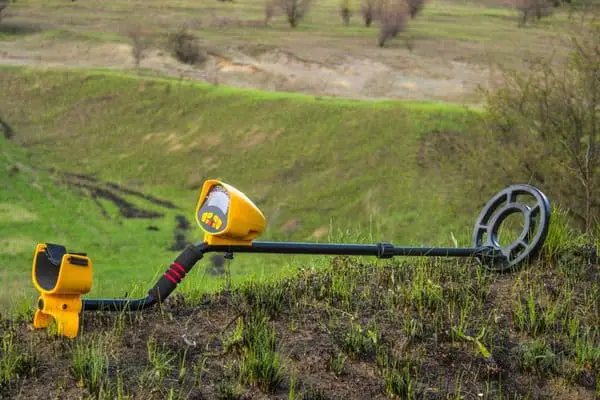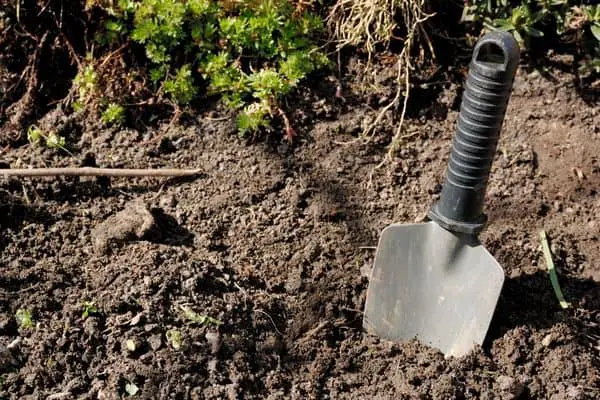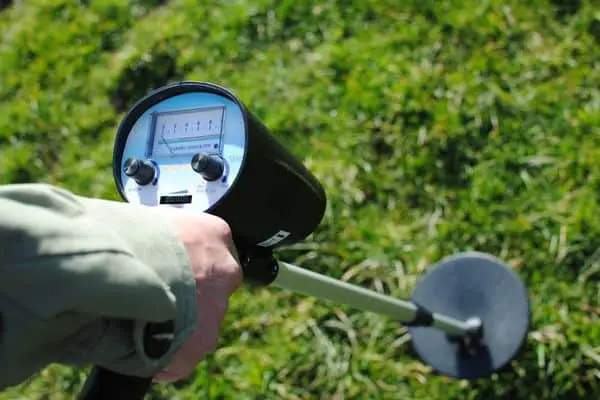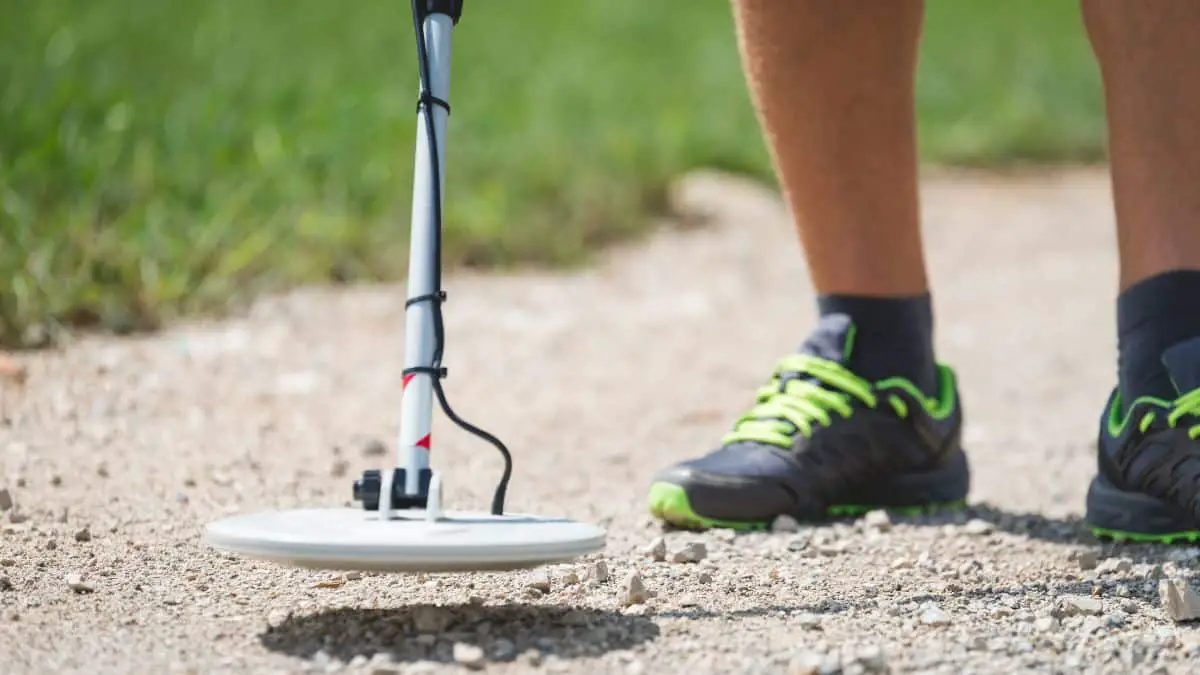How to Use a Metal Detector: 8 Essential Tips to Get the Most of It
Geophysicists, archaeologists, treasure hunters, airport staff… And your kid.
Yes, it’s possible! Metal detecting is invaluable in many areas. But it’s also a fun outdoor activity for you as a beginner explorer or your kids. And it can help foster a love for adventure and discovery. With a metal detector in hand, you can search for hidden treasures in your own backyard or at the park, exploring the world around you in a whole new way.
And because metal detectors are easy to use and require no special skills or training, they are a great tool for kids of all ages to enjoy. This guide will provide you with tips on how to effectively use a metal detector to get the most out of your experience.
#1. Getting a Metal Detector: How to Choose

When it comes to choosing a metal detector, there are a few key factors to consider. The first is your budget. Metal detectors can range in price from under $100 to several thousand dollars, so it’s important to decide how much you are willing to spend.
Keep in mind that more expensive models may have more features and better performance, but they may not necessarily be the best choice for everyone.
Another important factor to consider is the type of metal detecting you plan to do.
If you are mainly interested in finding coins and jewelry on the beach, a basic, entry-level metal detector might suffice. On the other hand, if you are planning on hunting for buried relics or treasure, you may want to invest in a more advanced metal detector with features such as ground balance and depth indicators.
It’s also a good idea to think about the type of environment you’ll be using the metal detector in. Some models are better suited for wet, sandy conditions, while others are better for dry, rocky environments.
Consider the type of terrain you’ll be searching in and choose a metal detector that is designed for those conditions.
Other key features to consider include:
- Ground balance: This feature helps to eliminate false signals caused by minerals in the soil. It is especially useful in areas with high mineral content, such as on the beach.
- Depth indicator: This feature shows the approximate depth of the detected object, helping you to determine how deep you need to dig.
- Audio tones: Most metal detectors have different audio tones for different types of metal, with higher tones indicating a higher probability of finding something valuable.
- Visual display: Some metal detectors have a visual display, such as a needle or LED light, that indicates the strength of the signal.
- Waterproof: If you plan on metal detecting in wet or humid environments, look for a metal detector that is waterproof or water-resistant.
Popular hobby metal detectors for kids or beginners that you could opt for include:
- Bounty Hunter Junior Metal Detector
- National Geographic Junior Metal Detector
- Fisher F22 Weatherproof Metal Detector
- Garrett Ace 300 Metal Detector
- Teknetics Delta 4000 Metal Detector
#2. Knowing Your Detector
When using a metal detector, it’s important to understand the different modes and settings available on your device. This will allow you to adjust your metal detector to suit the specific needs of your search and improve your chances of success.
The “All Metal” Mode
It’s easily the most common mode on a metal detector. This mode is typically used for general sweeps and is designed to detect all types of metal, regardless of their size or type. This mode is often used by beginners, as it’s the easiest.
The “Discrimination” Mode
This mode allows you to exclude certain types of metal from your searches, such as iron or other trash metals. This can be useful if you are looking for specific types of metal, such as gold or silver.
Some more advanced metal detectors also come with a “notch filter” that allows you to selectively choose which targets to filter out.
The “Pinpoint” Mode
In this mode, the metal detector is able to locate the exact location of a metal object. This is useful for fine-tuning the search and digging in the right spot to recover the object.
The “Sensitivity” Setting
Increasing the sensitivity allows the detector to be more sensitive to smaller targets and to locate deeper targets. However, if the sensitivity is set too high, the detector may pick up interference from other metal detectors or devices operating at the same frequency.
It’s important to find the right balance to ensure your metal detector can locate the targets you are searching for without picking up false signals.
The “Ground Balance” feature
A majority of hand-held metal detectors in the middle and upper classes will always include a ground balance feature. This is used to compensate for the effects of mineralization in the soil, which can interfere with the detector’s ability to accurately locate metal objects.
You’ll need to configure this correctly for your child to help avoid false signals and improve their chances of getting a lucky find.
#3. Extra Equipment You May Need

In addition to your metal detector, there are a few other pieces of equipment that can help make your metal-detecting adventures more successful. Here are a few items you may want to consider bringing along:
- Digging tool: A small trowel or digging tool can help you excavate any finds you come across. Look for a tool that is lightweight and easy to use, with a pointed end for digging and a flat end for scooping.
- Headphones: Many metal detectors come with built-in speakers, but headphones can help improve your ability to hear the audio tones and eliminate background noise. Look for headphones with volume control and a comfortable fit.
- Pinpointer: A pinpointer is a small, handheld device that can help you locate smaller, hard-to-find items. Simply turn it on and use it to scan the area around your find to pinpoint its exact location.
- Carry bag: A carry bag can help to keep all of your equipment organized and protected. Look for a bag with multiple pockets and compartments to hold your metal detector, headphones, digging tool, and any other items you may need.
- Extra batteries: It’s always a good idea to bring extra batteries along on your adventures, especially if you plan on being out for an extended period of time. Make sure to bring enough batteries to last the entire day, and consider bringing a battery charger as well.
- Sunscreen and water: Protecting yourself from the sun is important, especially during the summer months. Make sure to bring plenty of sunscreen and water to stay hydrated and comfortable.
- First aid kit: It’s always a good idea to be prepared for the unexpected. A small first aid kit can come in handy in the event of a minor injury or emergency.
With these, you’ll be well on your way to an effective treasure-hunting expedition with your friends or family.
#4. Getting Ready: Do Your Safety Homework
Before you leave, you should thoroughly research and understand the details of a metal-detecting excursion before heading out into the field. This includes understanding the laws involved and being aware of who owns the property you plan to search for.
It may also be necessary to consider any health concerns, such as the presence of hazardous materials. By having all of this information ready ahead of time, you can avoid wasting time during your search.
If you do happen to find something valuable, it is important to make an effort to return it to the original owner if possible. You can do this by using resources such as yearbooks or local lost and founds to identify the owner, or by posting about the item online.
While returning the item may result in forgoing any financial gain, the joy and happiness shared by the owner can make it well worth it.
Safety
Wear appropriate clothing and footwear, and always be aware of your surroundings. It’s also a good idea to let someone know where you are going and when you plan to return.
To avoid damaging underground utilities during your adventure( especially during DIY projects in the garage), it is important to locate them beforehand as a beginner explorer.
This process, called utility locating, involves finding underground utilities such as gas, telephone lines, electricity, and cable lines. To find a professional to help with this, dial 811 to connect with a licensed professional who can use a metal detector to locate buried utilities.
#5. Picking a Spot
It’s important that you do some research to get familiar with local laws and regulations before going out on a metal-detecting adventure. This will help you choose the best location and, more importantly, avoid any legal pitfalls.
It’s also important to get permission before searching on private property. Always respect posted signs and boundaries, and make sure to leave the area better than you found it by picking up any trash or debris you may come across.
Popular locations you should consider checking out include beaches, parks, and abandoned buildings. These areas are likely to contain hidden treasures and are worth exploring to better your chances of scoring treasures.
#6. Metal-Detecting Technique

Now that you know something about your metal detector, it’s time to start hunting for treasure. There are a few key things to keep in mind to help you get the most out of your metal-detecting adventures.
- When you begin searching, start by sweeping the metal detector back and forth in a slow, rhythmic motion. Make sure to overlap each pass to ensure that you don’t miss any spots.
- Make sure you are walking in a straight line to make the search systematic and efficient. This also ensures that you don’t forget covered areas.
- As you sweep, listen carefully to the audio tones and watch the display screen for any signals. Detectors with pointers should be used gently to avoid faulty readings.
- If you get a signal, switch to a more circular but gentle motion until you get the loudest beep from your detector in order to narrow down your target. Then carefully dig down to the indicated depth and see what you’ve found.
Always check your ground balance setting to guarantee a better chance of finding something to take back home.
#7. Digging a Plug
When metal detecting, you’ll often come across targets that require digging to retrieve. One of the most effective ways to dig these targets is to use a technique called “digging a plug.” Here’s how to do it:
- Locate the target: Using your metal detector, locate the position of the target and mark it with a small flag or any marker available.
- Determine the depth: Using the depth indicator on your metal detector, determine the approximate depth of the target.
- Start digging: Using a small trowel or digging tool, carefully dig a narrow trench around the marked area. Be sure to keep the trench as narrow as possible to minimize the amount of dirt you have to sift through later.
- Cut the plug: Once you’ve dug down to the approximate depth of the target, use your digging tool to carefully cut a small plug of soil out of the ground. The plug should be about the size of a small loaf of bread and should contain the target.
- Sift through the dirt: Place the plug on a clean, flat surface and carefully sift through the dirt to look for the target. If you don’t find it right away, you may need to use a pinpointer to help locate it.
- Replace the plug: Once you’ve found the target, be sure to carefully replace the plug in the hole. This will help to minimize any damage to the area and will make it easier for others to search in the future.
Digging a plug is a quick and effective way to retrieve targets from the ground, and it can help to minimize the impact on the environment. Just be sure to use caution when digging and to always follow any laws or regulations in your area.
#8. Troubleshooting Your Metal Detector
You are bound to experience some challenges when using your device. I have highlighted below some of the most common issues with metal detectors and how to potentially solve them.
False Signals
This can be caused by electrical interference from other devices. To fix this problem, try moving the metal detector to a different location, away from any sources of interference.
No Detection
This can be caused by a low battery, a damaged search coil, or the metal detector being set to the wrong sensitivity.
To fix this problem, first, check the battery and replace it if necessary. Then, inspect the search coil for any damage, and replace it if necessary.
Finally, adjust the sensitivity settings on the metal detector to see if that improves its performance.
Inconsistent Readings
This can be caused by ground mineralization. To fix this problem, try using a ground balance setting on the metal detector to counteract the effects of mineralization.
Frequently Asked Questions
What are some good metal-detecting spots for kids?
Some good metal detecting spots for kids include beaches, parks, and other public areas where people may have lost items. It is important to check with the landowner or manager of the area before using a metal detector and to respect any rules or regulations that may be in place.
How does a metal detector work?
A metal detector uses electromagnetic induction to detect metal objects buried underground or hidden within other materials. The metal detector sends out a magnetic field and measures the strength of the reflected field. Any change in the reflected field strength, it alerts the user that there may be metal in the area.
Can kids use metal detectors?
Yes, many metal detectors are designed for use by children and can be a fun and educational activity for kids. It is important to supervise children while they are using a metal detector and to make sure they are using it safely and responsibly.







